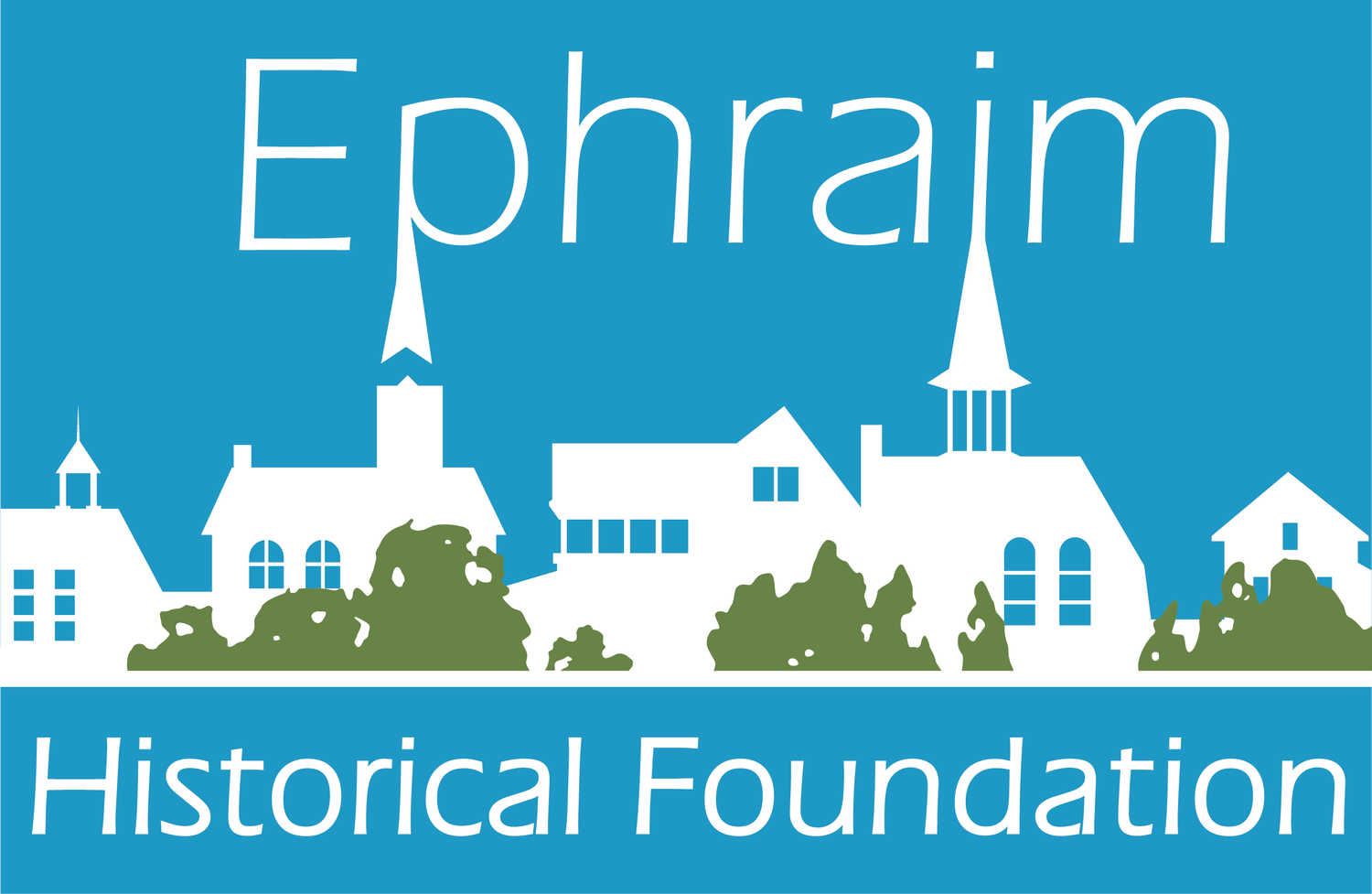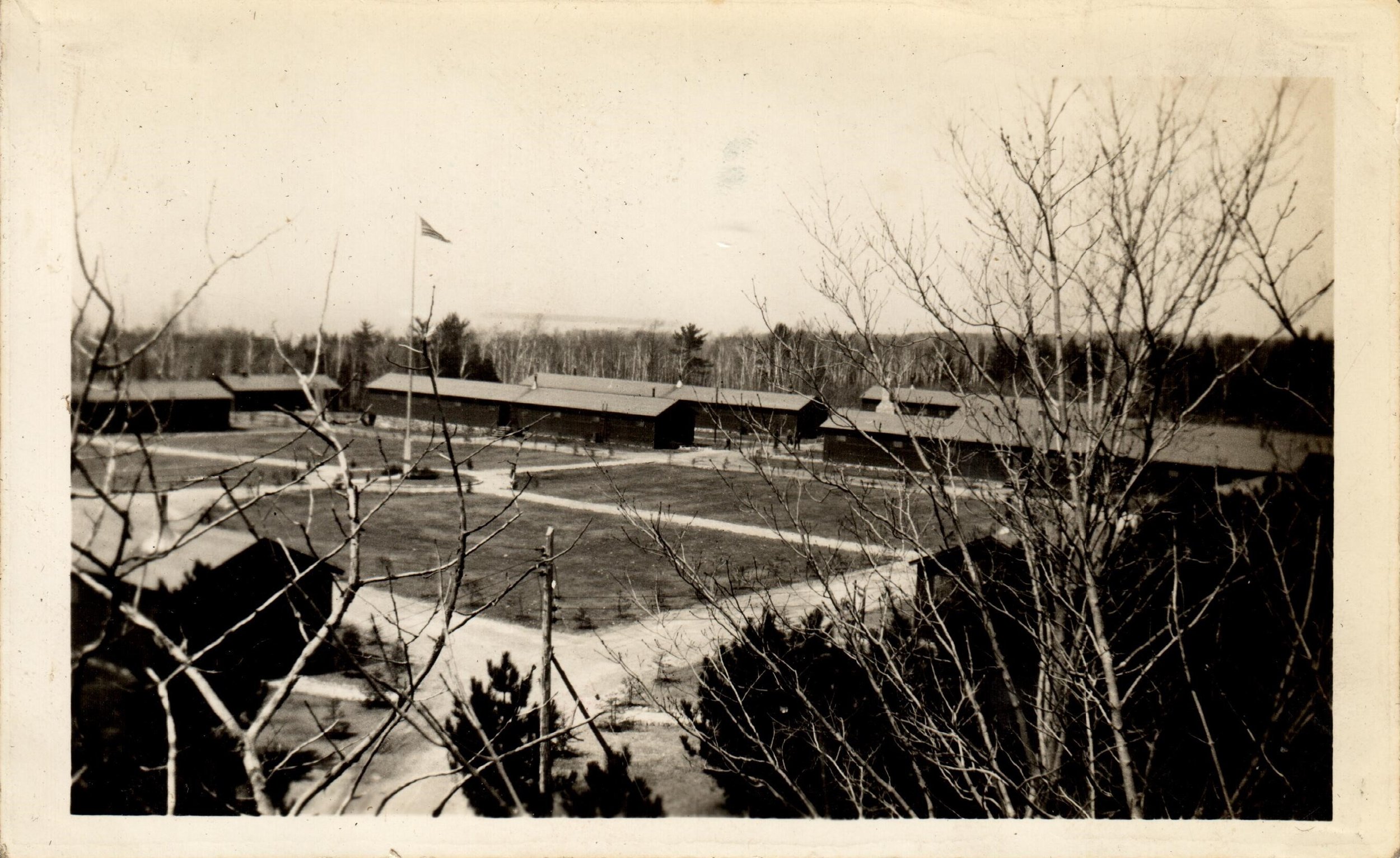Camp Peninsular: 1935-1937
The 2016 exhibit in the Anderson Barn, Two Roads Diverged: Camp Meenahga and Camp Peninsular in Peninsula State Park, featured the history of Camp Meenahga for Girls and the Civilian Conservation Corps camp. Curator and Marketing Coordinator Emily Irwin submitted this blog to announce the exhibit. The blog was updated in 2024 by EHF Educator Kathleen Harris.
In 1935, during The Great Depression, Door County residents began wondering if a Civilian Conservation Corps (CCC) camp was about to be established near Ephraim. When three federal employees visited Peninsula State Park, the creation of a camp seemed certain.
After months of speculation, the first group of CCC enrollees arrived on August 10, 1935, at the newly established Camp Peninsular. The name Peninsular comes from the park, which was sometimes called Peninsular State Park in early writings. Enrollees, single men aged 17 to 25, were there to improve the infrastructure of the park, the roads and buildings. CCC men in Door County and elsewhere would also plant trees and clear trails, giving the federally funded work group one of its many nicknames: Roosevelt’s Tree Army. Franklin D. Roosevelt was U.S. President at the time.
During the first week more enrollees, as well as needed supplies like cots, buckets, stoves, and mattresses arrived. Most young men came from Illinois and Wisconsin. At first, they stayed in tents. Construction of camp buildings - including barracks, latrines, and a mess hall - began soon after the camp opened.
Residents of Camp Peninsular rose promptly at 6 a.m. After shaving, washing, and dressing, men were expected at 6:30 morning exercise, followed by breakfast, roll call, and inspection. By 8 a.m., enrollees were at work on assigned projects. Enrollees worked 40 hours per week, Monday through Friday, and received $30 a month (though $22-25 had to be sent home to his family).
Camp Peninsular, circa 1936. Photo courtesy of Litkea Collection, Peninsula State Park.
Work projects in Peninsula State Park included the creation of roads, trails, campsites, and parking lots. Clearing of poison ivy and other noxious weeds, constructing stone walls, the (now sided-over Nicolet Beach bath house), and planting of hundreds of pine trees happened throughout the park. The CCC men also built a ski jump and overlooks at Eagle Panorama and a stone wall at Sven’s Bluff.
Many applauded the creation of Camp Peninsular, but several Ephraim and other Door County residents voiced concern. Most local men (besides teachers) were not eligible. (The Works Progress Administration/WPA soon hired local men and women.) A few thought CCC enrollees would disrupt nature rather than beautify it; it didn’t help that most projects were planned by government officials who were not from Door County. Still others argued that it was unwise to have 200 or more young men in the park, particularly during tourist season, and with the nearby girls camp, Meenahga. Some viewed CCC enrollees as “ruffians” and young men of ill repute.
The ongoing controversy contributed to an early end of the CCC’s presence in Door County. On June 30, 1937, less than two years after it began, Camp Peninsular closed. By the end of the 1930s, the economy improved and the CCC program ended. In addition, the efforts of all national programs were focused on war in Europe and the Pacific.
Enrollees at Camp Peninsular departed before finishing a few projects. But, so much was accomplished. Some of it is still visible, especially the stone walls and mixed pine forest which are now iconic and treasured.

